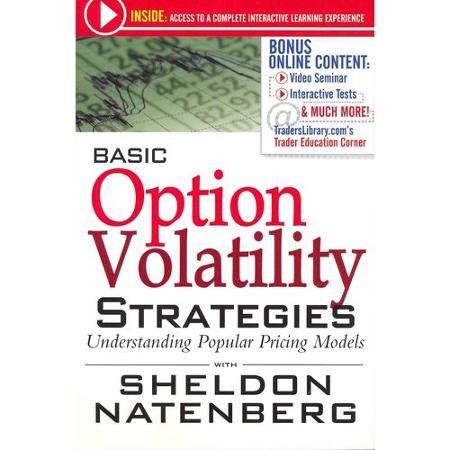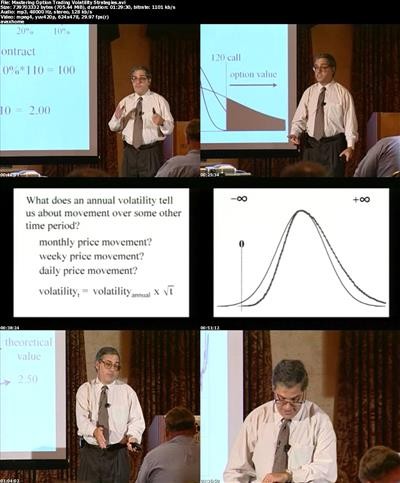Mastering Volatility
Post on: 18 Апрель, 2015 No Comment

Although the u.s. stock market took has taken investors for a wild ride over the past year, it has largely remained unchanged. Its enough to drive risk-adverse clients up a tree.
After reaching a 50-year high in volatility, the S&P 500 (SPY) delivered flat performance in 2011 while the Dow Jones Industrial Average (DIA) gained 5.5 percent.
What can advisors do to hedge volatility? How can they calm their clients nerves? Are VIX ETPs the answer?
One barometer of stock market volatility is the CBOE Volatility Index also known as the VIX. The VIX is a forward looking tool that measures the expected future volatility of the S&P 500 stock index for the next 30 days. The VIX is quoted in percentage points and it was first introduced in a research paper by Professor Robert E. Whaley at Duke University.
Today, the VIX indicator has become a popular gauge of investor fear and complacency. A high VIX reading signals fear whereas a low reading means increasing risk appetite among investors. By using a weighted blend of various S&P index options, the VIX attempts to estimate the implied volatility for U.S. stocks.
Late last October, three-month volatility for the VIX peaked at a record level of 191.59. This surpassed previous levels of elevated stock market volatility in late 2008, when the VIX traded around 190. The median VIX reading over the past 10 years has been 92.56.
The same stock market volatility that treated a select group of Wall Street titans with courtesy hasnt been so friendly as of late. Hedge funds that previously thrived on stock market peaks and valleys hit a brick wall in 2011. Renowned managers like John Paulson that once could do no wrong, got whipsawed.
Paulsons Advantage Plus fund lost around 52 percent in 2011 after making incorrect bets on Bank of America, Hewlett Packard and gold. Paulson became a Wall Street folk hero after making billions of dollars with bearish bets on subprime mortgage debt during the financial crisis. In 2010, he personally raked in more than $5 billion in profits.
Crispin Odey a London based manager who accurately predicted a banking collapse, was also among the worst performers last year. His $2.4 billion stock fund lost almost 25 percent in value.
Hedge Fund Research reported that hedge funds lost 5 percent on average last year compared to flat performance for the S&P 500. For long/short equity managers, it was one of the worst 12-month periods since the early 1990s.
VIX Strategies
Instead of avoiding volatility, some advisors set aside a portion of their clients portfolios to trade it. Since its impossible to invest directly in the VIX, the next best choice is to trade ETPs that are linked to it.
The ProShares Short VIX Short-Term Futures ETF (SVXY) aims for a return that is inverse the return of S&P 500 VIX Short-Term Futures Index. If short-term volatility in the S&P falls, SVXY is designed to increase. Since SVXY aims for that opposite exposure for just a single day and holding it for longer periods could result in performance returns that are different from the target return for the same period. These differences are caused by many factors, like compounding of daily returns, fees and (what else?) stock market volatility.
For advisors that want a bullish trade on volatility, the ProShares VIX Mid-Term Futures ETF (VIXM) and VIX Short-Term Futures ETF (VIXY) both offer VIX exposure but with different time frames.
The S&P 500 VIX Mid-Term Index has been negatively correlated to the S&P 500 over the past several years, minus 0.77 in 2009 and minus 0.86 in 2010. Its also generated relatively low beta compared to the VIX, indicating less sensitivity to price movement. VIXM and VIXY aim for 1x daily performance.
For leveraged long VIX exposure, the ProShares Ultra VIX Short-Term Futures ETF (UVXY) shoots for double or 2x daily leverage to the S&P 500 VIX Short-Term Futures Index. All of the ProShares VIX ETFs charge annual expenses of 0.95 percent.
Finding their Place
Where do VIX ETPs fit in as an investment strategy?
At first, I thought VIX ETPs would be perfect hedging vehicles for the market, but I found this not to be as simple as an uninformed investor might believe, said Joseph G. Witthohn, CFA with Janney Montgomery Scott. Some of these volatility ETFs appear to actually increase volatility at times, rather than keep it in check. But I would not discount them entirely.
Witthohn observes that one short-term volatility ETF was up over 150 percent in the third quarter alone while over the same period the S&P was down just 14 percent. While this might get an investors heart racing, it should be noted that in April of 2011 the S&P was up slightly less than 3 percent while the same volatility ETF declined over 20 percent.

The jury is still out, he says, as I would like to see more history behind these relatively new products. But what I have seen so far has captured my attention and I am certainly looking forward to reviewing these products further as the market goes through what may be a very volatile year ahead.
Minimizing Swings
Low beta ETPs are another twist on playing stock market volatility. The general idea is to own a basket of stocks with low volatility while simultaneously avoiding higher beta stocks.
An approach along those lines is taken by the QuantShares U.S. Market Neutral Anti-Beta Fund (BTAL). The fund screens for stocks that are less volatile than the overall market. BTALs target index, which is compiled by Dow Jones Indexes, is equal weighted, dollar neutral, sector neutral and not levered. The index rebalances monthly by identifying the lowest beta stocks as long positions and highest beta stocks as short positions, of approximately equal dollar amounts, within each sector.
VIX ETF products are futures based and are very different from Act of 1940 registered funds such as Quantshares, said Chuck Martin, CFA at QuantShares. Our anti-beta is one of our tactical funds that provide a mechanism for investors to hedge unintended portfolio exposures or to express precise views on the market.
Martin says the anti-beta strategy has a historical correlation of minus 0.8 to the overall U.S. equity market. The resulting portfolio tends to be long stocks that have high dividends and do not suffer much during downturns and short more volatile names that tend to sell off more steeply in bear markets. Heres what it means: If an advisor expects more stable companies to outperform going forward or if they wish to hedge some of their long beta exposure, an anti-beta fund could be a good choice.
BTALs net annual expense ratio is 0.81 percent.
The PowerShares S&P 500 Low Volatility Portfolio (SPLV) is another ETF that plays on the same theme of low beta. SPLV consists of the 100 stocks from the S&P 500 Index with the lowest realized volatility over the past 12 months, based on a statistical measurement of the magnitude of up and down asset price fluctuations over time. The funds annual expense ratio is 0.25 percent.
Further Considerations
Before diving into VIX ETFs, advisors should keep a few things in mind. First, VIX ETFs do not perfectly track the spot prices for the CBOE Volatility Index; this is because they use futures contracts. Additionally, VIX ETFs are treated differently than stocks from a tax standpoint and a K-1 might be generated. Lastly, VIX-based exchange-traded notes (ETNs) are backed solely by the credit quality of the issuer, which adds another dimension of risk.
In the short run, reducing stock market volatility may be high on a clients list of priorities. But in the long run, preoccupation with short-term ups and downs could hurt their long-term performance. Advisors who help their clients to understand this most basic financial truth have achieved something of considerable value.














